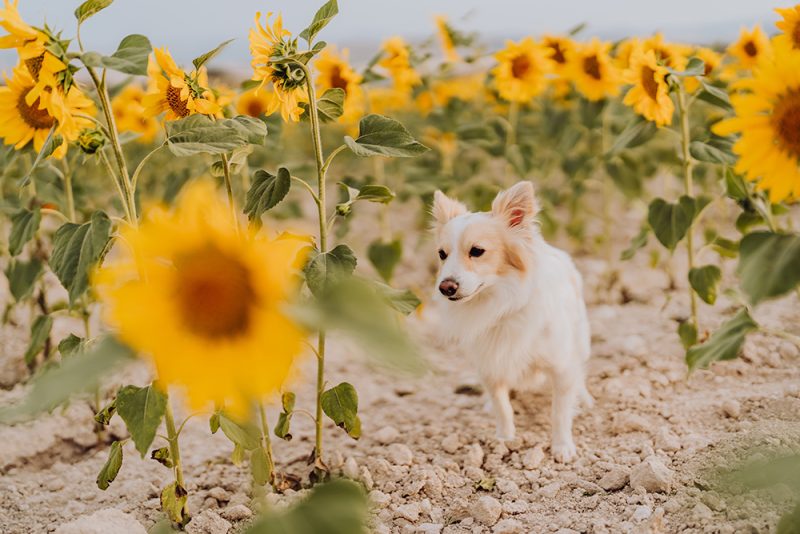Spinning is one of the many fun tricks that man’s best friend can easily be taught to do. This is a beginner-level trick that won’t take a lot of technical skills or expert knowledge to teach. Once your dog learns the gist of spinning, they can even learn to change direction and spin multiple times on command.
Follow along for 5 tips and tricks you can implement in your training regimen that will have your four-legged best friend doing circles in no time based on positive-reinforcement training techniques.

How to Teach Your Dog to Spin in 5 Steps
1. Find Something That Piques Your Dog’s Interest
If you are to the point where you are ready to start training your dogs to do tricks, you are probably all too familiar with reward-based training. When you are ready to start teaching your dog to spin, you are going to need a reward that will grasp their interest immediately and keep them locked in on the prize.
The most common and effective reward for most dogs will be a tasty treat they love, but some dogs may prefer toys. By now, you likely know the way to your dog’s heart, so make sure to have their favorite treat or toy ready for training, and to get started, hold it just above your dog’s nose.
Begin with a treat between your fingers and your arm just above the height of your dog’s nose. With your treat held close (they can even lick it as you move), stir the pot. When your dog has completed the 360º turn, mark it with a “Yes!” or a clicker and release the treat. Repeat five times.
2. Attempt the Spin
Now that you have your dog’s sight set on its prize, do the “stir the pot” motion to get your dog to move in a complete 360-degree turn. Once they’ve completed the spin, give them praise and reward them for a job well done. If you are using clicker training, this would be where you’d want to sound your clicker.
You may have to get creative in this step to help encourage your dog to spin around. You may need to have them walk forward a couple of steps and then motion them in the circle with the treat or toy in the lead. Repeat this step at least 5 times to make sure they have it down and remember to hand over the reward with lots of excitement and praise each time.

3. Repeat Without the Reward in Your Hand
The goal is to have your dog spinning on command. Next, you want to repeat this process without the reward in hand, and when your dog successfully spins, pull the reward out from your pocket and give them lots of encouraging praise to let them know they did a great job.
4. Add Your Chosen Verbal Cue
Now that your dog has gotten the movement down, you can add the verbal cue “spin” or any other cue of your choice that you want to be associated with this trick. Make sure it is short and easy to understand that way your dog can easily pick up on it.
Repeat the spin while saying the word aloud then “stir the pot” again with a treat in your hand. You need to make your hand signal less noticeable as you repeat, that way your dog is relying on the command alone, rather than the hand signal.

5. Repeat Process Until You Can Remove the Hand Signal
The key to successful training is practice, practice, practice. The repetition is important because it aids your dog in understanding what you want from them, and the reward-based training builds their confidence and reinforces the behaviors you want to see.
Once your dog crecognizes the cue, you can move on to removing your hand signal entirely and only use the verbal command to get them to spin. This is where you can also start working on changing directions and spinning multiple times.

Benefits of Positive Reinforcement Training
When it comes to dog training, whether you are starting with basic obedience or have moved on to teaching tricks, positive reinforcement is the most highly recommended training technique. We’ve listed some of the primary benefits of positive reinforcement training that are backed by scientific studies.
Forms a Stronger Bond with Your Dog
Positive reinforcement training will help you strengthen your bond with your pup and bring the two of you closer. Reward-based training and lots of praise will help increase their confidence and promote a positive learning environment that your dog will enjoy. You are much more likely to enjoy training sessions that are built on praise and positive energy, too.
Eliminates Fear
Punishment-based training can lead to fear and anxiety, which could lead to unwanted behaviors. Not only that, but your dog will also not enjoy training sessions that leave them fearful and afraid of what will happen to them next. This can negatively impact training and may even cause your dog to hold back due to fear of punishment. There’s no room for fear when you use positive reinforcement training.

Training Will Be Enjoyable
Most dogs aim to please their owners and become very excitable when they receive praise and reward for getting the job done right. The positive interactions during training will have your dog looking forward to the time you spend together.
Other Family Members Can Get Involved
Positive reinforcement training can be implemented by all family members, even small children under the supervision of an adult. You want your dog to be obedient to all family members and this is a great way to make sure that’s going to happen. This will help strengthen your dog’s bond with the entire family, rather than just the individual doing the training.

Conclusion
Training your dog to spin can be easily done in just 5 simple steps and lots of repetition. This is an easy trick that is great for beginners who have just finished up basic obedience. Make sure to have treats in hand, or your dog’s favorite toys ready and you will have them spinning in circles in no time!
See also:
Featured Image Credit: Tatyana Blinova, Shutterstock


















